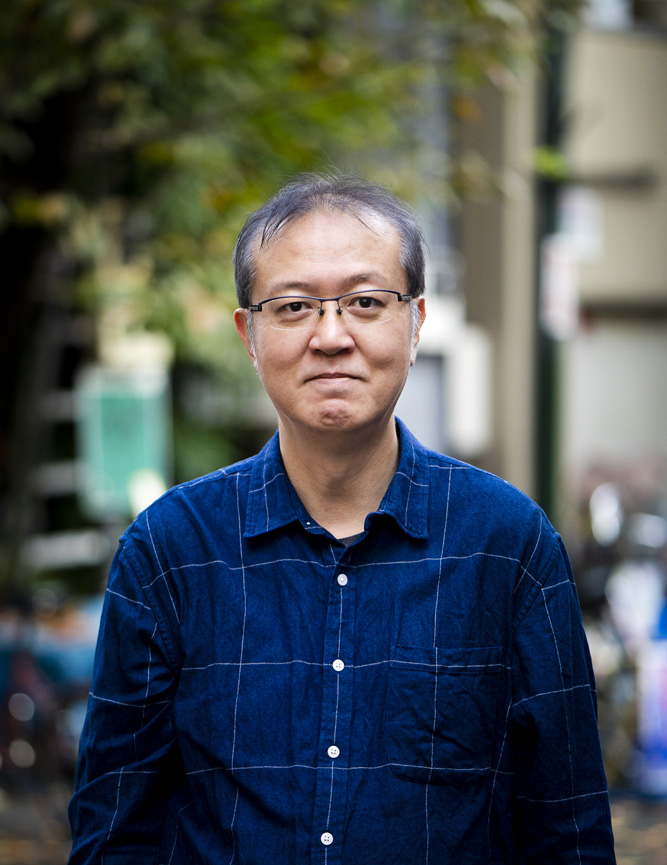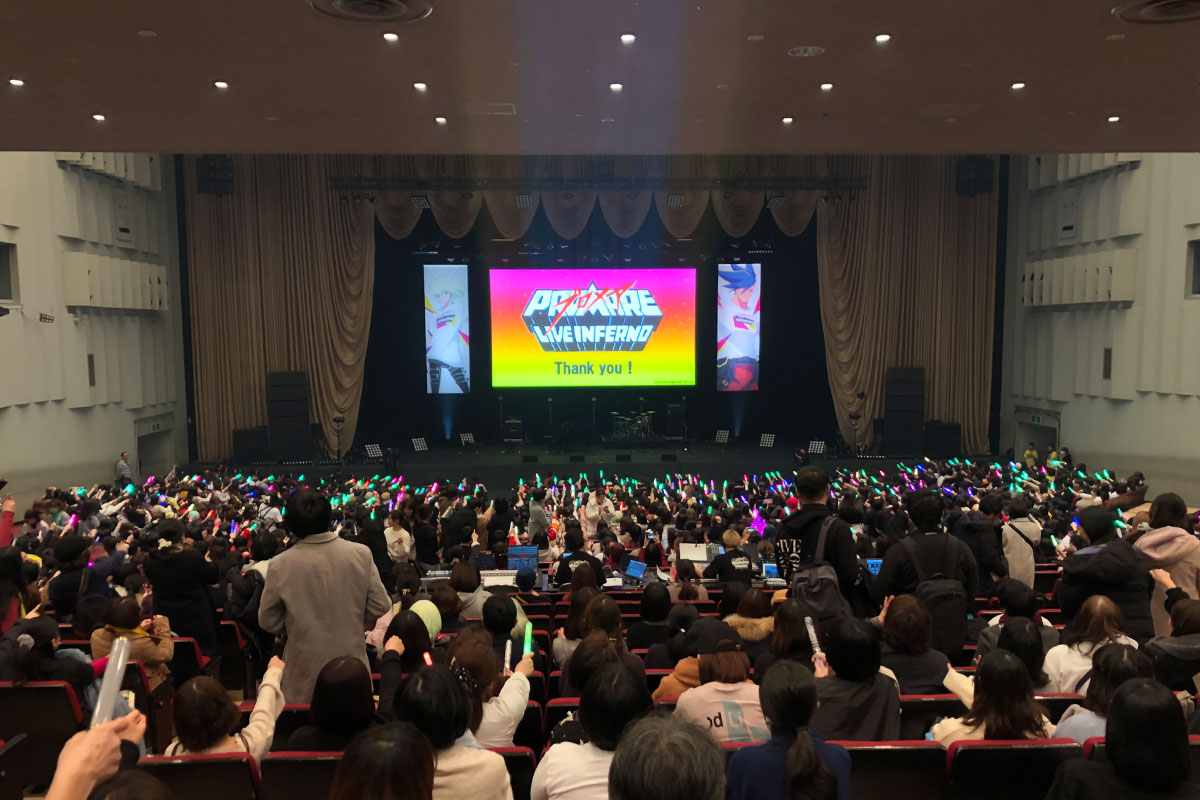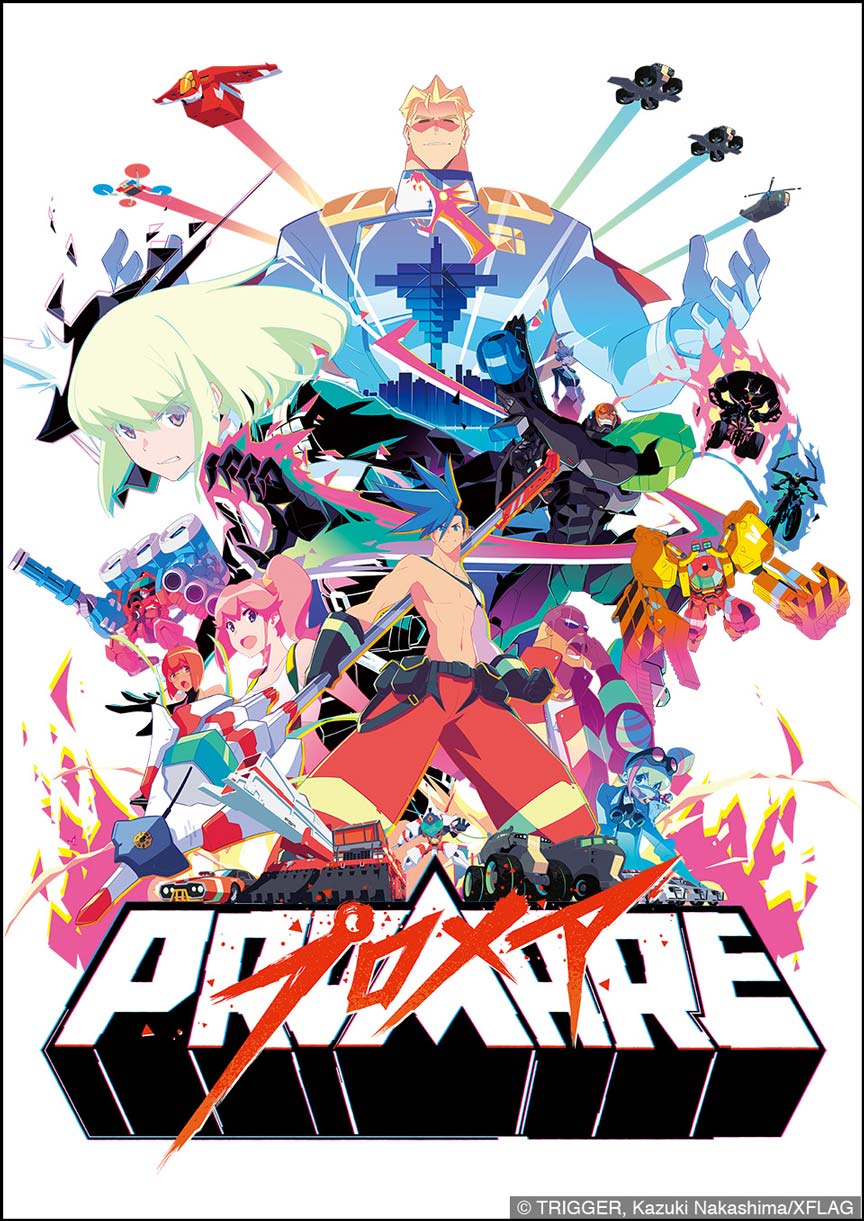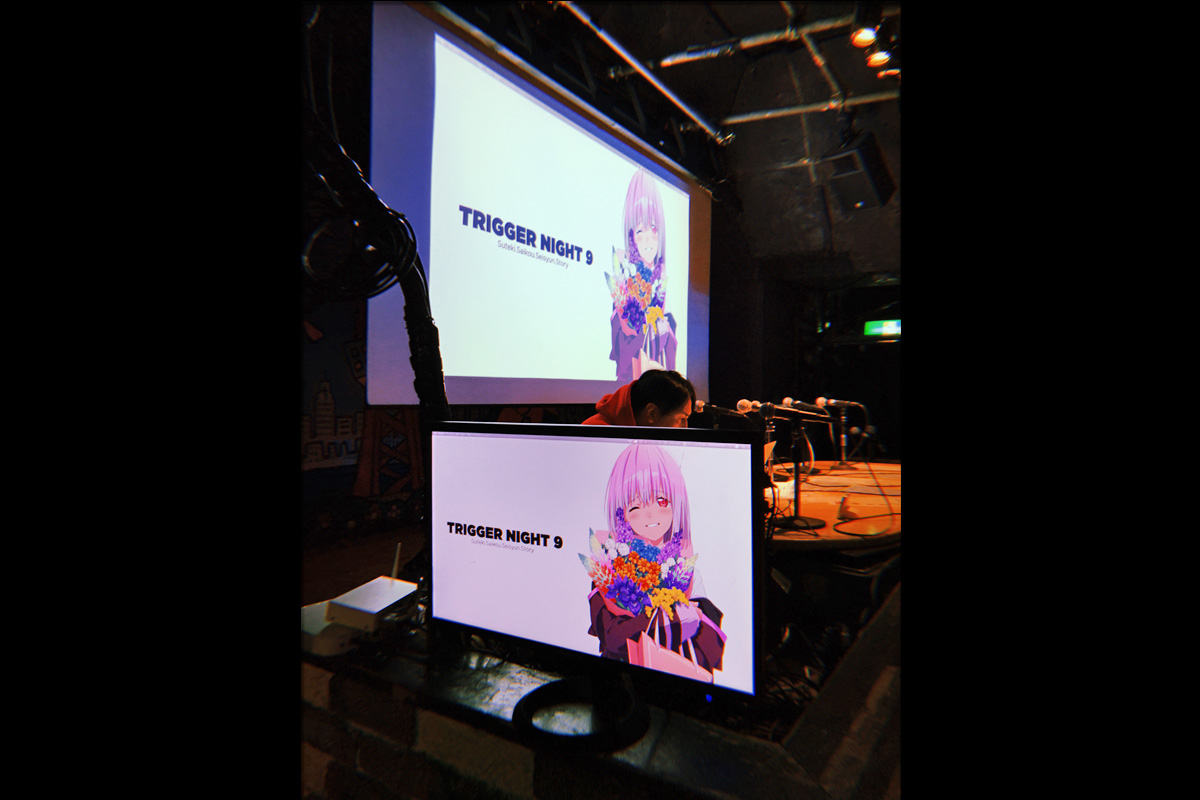This article is a reprint from a special website on animation for the Japan Media Arts Festival overseas promotion, held by the Agency for Cultural Affairs.
Animationweek presents a series of special interviews with the 4 leading Japanese animation studios as part of a special program on the aforementioned website.
*: The official website for the overseas promotion of the festival is here and a special website on animation for the Japan Media Arts Festival overseas promotion is here.
Creating global fans in the wake of high entertainment

OTSUKA Masahiko (CEO, TRIGGER)
After building his career in live-action film making, OTSUKA joined Studio Ghibli. He was an assistant to the director for Pom Poko and Whisper of the Heart. OTSUKA later joined GAINAX and participated in the production of Neon Genesis Evangelion along with other animations. While working on other animation titles, he also took part in Love & Pop, a live-action film as an assistant director in which he was accounted for his background career. ANNO Hideaki appointed him to become the director for Petite Princess Yucie, which became his first directed work. In 2011 OTSUKA founded TRIGGER along with IMAISHI Hiroyuki and MASUMOTO Kazuya.
There is no doubt that expansive, well-structured stories that last over many episodes throughout a series, and engaging action scenes with ambitious compositions and high-adrenaline motion, are two of the most iconic characteristics of Japanese animation and recognized as bywords for the artform among the many fans that are outside of Japan. TRIGGER is a distinguishing Japanese animation studio that takes those characteristics and pushes it to the next level.
Since its establishment in 2011, TRIGGER has been the center of attention in the huge, worldwide Japanese animation community by consistently putting out high-quality animation series with well-structured and attractive science fiction and fantasy stories with appealing, strong characters that quickly becomes a hot topic in the industry, with titles such as KILL la KILL*1 (2013), Little Witch Academia (2013), Space Patrol Luluco (2016), Kiznaiver (2016), SSSS.GRIDMAN*2 (2018) and BNA: Brand New Animal (2020), just to name a few. In 2019, they made an impact on the Japanese animation industry due to the positive reactions from the worldwide cinema market on the theatrical release of PROMARE*3, their new, eagerly-awaited original feature film.
Currently, TRIGGER has about 40 hand-picked staff of great talent that covers the entire process of animation development and business, planning and development of animation, and even managing some events relating to their titles. The staff at TRIGGER includes world-renowned star creators such as IMAISHI Hiroyuki, YOSHINARI Yoh and SUSHiO in the animation development department.
In addition to TRIGGER’s notable reputation as a studio, they also became pioneers in the animation market. They ran a crowdfunding project on Kickstarter in July 2013 to develop the sequel to their short film Little Witch Academia (2013), and the project accumulated 150,000 US dollars in just the first 5 hours and reached about 625,000 US dollars by the end of the campaign in August 2013. It led to their first original feature film Little Witch Academia: The Enchanted Parade (2015). In effect, the global animation industry now knows the power of animation fans and the potential of crowdfunding for raising the budget in an animation project.
TRIGGER aims to create a new way of enjoying animation by increasing opportunities for staff and fans to communicate directly. This approach is based on the experience that OTSUKA Masahiko, now the president of TRIGGER, felt during his time working for GAINAX: “We want to deliver our voices from the production team to the fans.”
This is a special interview with studio president OTSUKA Masahiko, who is also famous for his works as a director and assistant director at STUDIO GHIBLI, GAINAX and TRIGGER. His goal with the interview is to give you the story behind their creations and the roots of their originality.
*1: The 18th Japan Media Art Festival Animation Division Jury Selections
*2: The 23rd Japan Media Art Festival Animation Division Jury Selections / Best Dramatic Presentation at the 50th Seiun Award
*3: The 23rd Japan Media Art Festival Animation Division Jury Selections
Interview
The desire to try new approaches in creating animations and interacting with our fans

Please let us know the reasons behind and the opportunities that led to establishing the studio.
OTSUKA Masahiko: It’s been about ten years since our studio was established. At the time, I belonged to studio GAINAX along with the people who would later become the core members of TRIGGER. Neon Genesis Evangelion, directed by ANNO Hideaki, may be the most famous title among the works of GAINAX, but at the time I was part of a team a bit different from Mr. Anno’s crew, and we were in the beginning of developing GURREN LAGANN, a different direction from Neon Genesis Evangelion.
Additionally, we wanted to try new approaches in creating animation and interacting with our fans, so we wanted to challenge our potential and find out how far we could go without GAINAX, even though the name was a big brand. Then, we told the company that we wanted to leave and establish our own studio. The company told us, “good luck”, and sent us out. So, we established our studio, TRIGGER, with the main members who had worked for GURREN LAGANN. Therefore, I think the biggest reason for the establishment is that we wanted to challenge ourselves to something new with our own abilities.
Please let us know about the features and strengths of the studio, its direction and the category of work that your studio is strong in.
OTSUKA Masahiko: As for the studio’s features, TRIGGER always places great importance in the intention of each director. Fortunately, we’ve been able to create many titles with original stories, although it is the directors who can guide works that are not adaptations. So, rather than having a shared vision of the studio, we first focus on what we think is the most important thing in creating original works: what impression the directors have for each title and what the directors really want to express through each work.
As for the type of works, the main director of TRIGGER, Mr. Imaishi, is good at creating action animation, and we have a lot of staff who are attracted to it, so as a result we are inclined to create animations that have many action scenes, even among other works of entertainment.
Entrusting the work to a director, because the director has a solid vision on what he or she really wants to create
Your studio has been developing quite unique animation titles. I would like to ask you three questions on how you attained that originality.
– How does your studio decide the stories or projects to develop, and what criteria does the studio have for the selection of titles?
OTSUKA Masahiko: TRIGGER entrusts the work to a director because the director has a solid vision on what he or she really wants to create. So, during the initial planning stage we first focus on what the director, not the studio, really wants to do with the potential project. A project becomes greenlit only when we could see what the director wants to achieve with the potential project.
Directors bear heavy responsibilities in creating animation works because it is a very hard mission and it requires each and every staff member to work on tasks that require perseverance. I think only those who want to create animation despite the difficulties and responsibilities can take on directing.
“Want to cherish the visual design direction that the Japanese animation industry has nurtured”
– Could you please let us know what your studio takes special care in through the production process of each animation project, such as the visual expression and structure of the story?
OTSUKA Masahiko: Basically, although we leave visual expressions or story structure in the directors’ hands, we have the common understanding as a studio that we do not want to create something that is not within the realm of entertainment, because enjoying moving drawings is what animation is about. Our works may present or contain social themes, but even in such cases I think the most important thing is that the works must be entertaining for the audience.
I also want to cherish the visual design direction that the Japanese animation industry has nurtured. Worldwide, the techniques used in creating animations are moving towards 3D CGI, however there are a lot of hand-drawn 2D animations still remaining in Japan. Thanks to the unprecedented look of animation the Japanese animation industry has developed, the stylization originating from manga, we can use techniques in character design where many details can be omitted, but at the same time many delicate expressions can be represented.
– Animation is an aggregation of the creativity of many creators. What qualities does your studio look for on the selection of each staff for a project team, production environment or the management of each project/production team?
OTSUKA Masahiko: For TRIGGER, the selection criteria for creators can be summarized as follows: the presence of motivation and track records that can convince the surrounding team. We don’t force creators to change their own artistic character or illustration styles they are good at. I think it is fine to have diverse works that vary depending on each creator.
I think the ability to create output is one of the talents a creator can have. Even if a creator seems to be talented, he or she cannot contribute to animation unless the talent can be demonstrated in the output. We can only judge his or her ability by looking at the actual works of that person. In that sense, this industry is a meritocracy.
© TSUBURAYA PRODUCTIONS
© 2018 TRIGGER, AKIRA AMEMIYA / GRIDMAN PRODUCTION CONSORTIUM
SSSS.GRIDMAN directed by AMEMIYA Akira.
Many of your works are not based on original novels or mangas. In KILL la KILL, the story is splendid and keeps on developing throughout the work, from beginning to end. Please tell us what you are careful and particular about when creating original stories.
OTSUKA Masahiko: We happen to create many ‘grand’ stories. Fans often say that TRIGGER’s titles eventually go into outer space in the end (laugh), but it is not our initial aim. The larger the universe of the work, the flashier it gets as an entertainment, so I think our stories tend to blow up automatically during the production process.
I personally think that if the characters are appealing enough, the work can be entertaining even with a minimalistic story, so I do not think we necessarily need to make grand stories. I personally predict that TRIGGER’s works will diversify as the number of directors increase, such as with AMEMIYA Akira, a young director who can create more sensitive stories.
Please tell us about key creators who have supported the studio’s works.
OTSUKA Masahiko: So far, we have created our titles mainly with the members who worked for the GURREN LAGANN project, including directors YOSHINARI Yoh and IMAISHI Hiroyuki, screenwriter NAKASHIMA Kazuki, and animator SUSHiO. We just recently begun searching for new creators.
AMEMIYA Akira will be part of the next generation of TRIGGER after them, and in addition, we have a line producer, TSUTSUMI Naoko, who manages on-site and keeps the production running smoothly. Because of her, we can take on brutally challenging titles.
In addition, WAKABAYASHI Hiromi is the kind of talent that cannot be found in ordinary studios. While his title changes with each work, he became an advisor of directors, who tend to be lonely, and emotionally supports them with his straightforward way of speaking.
Last year, your feature film PROMARE was well-received in oversea markets, including in North America. Could you please let us know how your studio, who came out with TV series hit-after-hit, took on the challenge of creating a feature film with an original story?
OTSUKA Masahiko: I’ve actually been wanting to create a feature film since the establishment of TRIGGER, partly because I started working in the animation industry at Studio Ghibli. KILL la KILL, the first original series by creator pair Mr. Imanishi and Mr. Nakashima, became a very challenging and hard project and the two creators felt like they did everything they could do with the series. So, I thought the next work from the pair would be a feature film.
Thankfully, PROMARE was well received by fans, but behind the scenes there were some areas that were confusing in production due to our lack of experience, as it was the first feature-length film for the studio. So, I think the studio can further grow if we can improve the areas that did not go well during the making of PROMARE, not letting the difficult experiences be in vain.
Please tell us about the parts you struggled with or you thought didn’t work well.
OTSUKA Masahiko: When we create TV series, we produce each 30-minute episode in order and submit sequentially, keeping up with the broadcasting schedule. For feature films, we divide the whole animation into multiple parts and proceed in separate productions. In the case of PROMARE, all the parts are completed at the same time, as if all the episodes were submitted at once if we compare the situation to the production of a TV series.
Just before the deadline of the project, many of the staff noticed the difficulties in what they have to get through in creating a feature film. Thus, for the next opportunity, we hope we can keep in mind that we need to keep the production ahead of schedule so we can avoid what we experienced at the later stages. Before the natural replacement of the staff, we want to make the best use of the experience and would love to create another feature film.
Are you interested in overseas markets?
OTSUKA Masahiko: We are very interested in it and we have a strong notion to increase the number of fans worldwide by appearing in many overseas events every year. In terms of TRIGGER’s sales in Japan, our works are niche and not part of the mainstream market, however I think we will have enough fans to be sustainable as a business if we can surely reach out to the fans in the world who like what TRIGGER makes, even if it is a little niche.
Actually, we temporarily were in an ambience to take the mainstream market into consideration in the early production period of PROMARE, but we immediately came to the conclusion that it was part of our identity to not think that way. We thought our work would end up being toned-down if we start thinking, “if we do this it will sell well”, and focusing on an audience larger than what we can see and can come to our own events. I think what our audiences look for are works that all of us, with the directors at the center, find truly interesting and have fun working on, even if the works seem niche. So, the future theme of our business will be to continue creating such works and discover more and more fans who enjoy our works together.
“Animation is not only for children”
Please tell us about your vision and future outlook of the studio both in Japan and overseas, and also your ideal personnel and any challenges you may face.
OTSUKA Masahiko: When we look at the global markets, I think many adults still strongly think that animation is for families or children. As animation gained a place in society a bit sooner in Japan than in other countries, I think it is one of our roles to spread this idea worldwide. For example, when the people who watched KILL la KILL in their teens become adults, I think the view of animation as being not only for children would be accepted more broadly.
Through interactions with fans of TRIGGER, I feel that Japanese fans and overseas fans are the same, and people can be connected through animation. To exaggerate a bit, I think this is also beneficial for world peace. So, I want to reach the stage where various generations of people from all over the world become aware of Japanese animation over a long period of time.
Regarding talents, I think we will need overseas talents when bringing our works to the world, and our staff already have been influenced by various works regardless of domestic and foreign countries. Therefore, from now on I would like to increase opportunities in creating work with people overseas. However, we are still unable to easily invite talents overseas due to language barriers or financial burdens. If TRIGGER’s work starts selling more in the global markets, I think that it will lead to acquisition of new staff from all over the world.
[Interview Date: 13th May, 2020 ]










